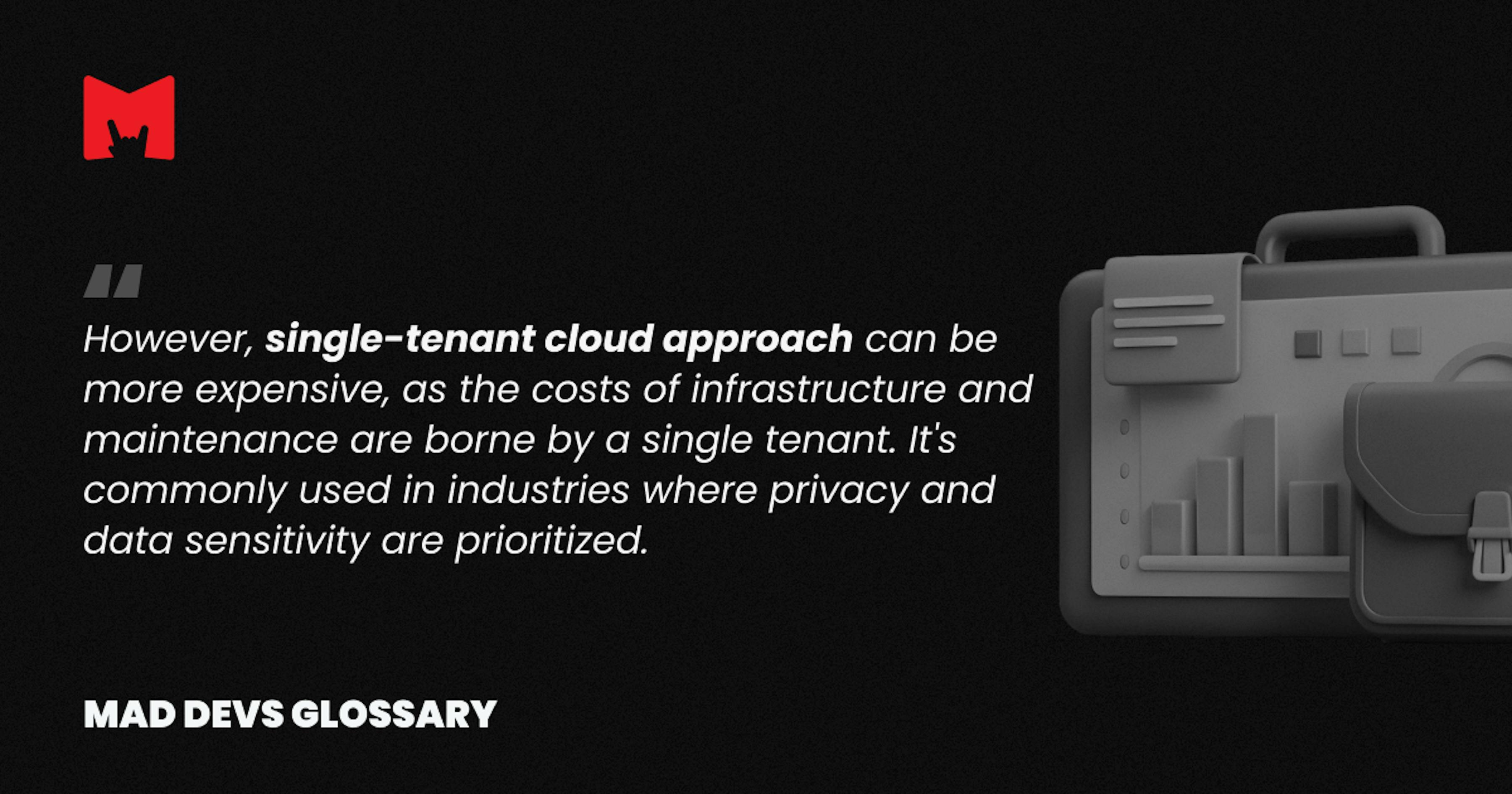
No Bad Questions About Business
Definition of Tenant in cloud computing
What is a tenant in cloud computing?
In cloud computing, a tenant refers to a group of users or an organization that shares common access with specific privileges to the software instance. Each tenant operates within a distinct, isolated environment while using the shared infrastructure provided by the cloud service provider.
The concept of a tenant is crucial in understanding how resources and services are allocated and managed in a cloud environment. Tenants can have their own data, configurations, and user management, which makes the cloud service customizable and secure for each group. This setup is particularly relevant in multi-tenant architectures, where multiple tenants share the same application or infrastructure.
What is single tenant in cloud computing?
Single tenant in cloud computing is an architecture where each tenant, or customer, has a dedicated instance of the software application and its supporting infrastructure. In this setup, the resources are not shared with other tenants to provide enhanced security, customization, and control over the environment.
Organizations with stringent security or regulatory requirements often prefer single-tenant environments because they offer greater data isolation.

What is multi-tenant in cloud computing?
Multi-tenant cloud computing is an architecture where multiple tenants share a single instance of the software application and its underlying infrastructure. Each tenant's data and configurations are isolated and invisible to others, even though they share the same physical resources. This approach allows cloud service providers to optimize resource utilization and reduce costs by serving multiple customers from the same system. Multi-tenancy is commonly used in software as a service (SaaS) models, where scalability and cost-efficiency are important for both the provider and the users. It is a cost-effective solution for businesses of all sizes, offering flexibility and efficient use of resources.
Types of multi-tenant architecture in cloud computing
There are several types of multi-tenant architecture in cloud computing. They include
- Shared database, shared schema: all tenants share the same database and schema, but data is isolated using tenant identifiers.
- Shared database, separate schema: all tenants share the same database, but each tenant has its own schema, providing more data separation.
- Separate database: each tenant has its own dedicated database, offering the highest level of isolation but at a higher cost.
- Hybrid multi-tenancy: combines elements of the other architectures to balance cost, scalability, and isolation.
Each type has its trade-offs in terms of complexity, security, and resource efficiency.
Difference between single and multi-tenant
The key difference between single and multi-tenant cloud computing lies in resource sharing and isolation. In a single-tenant environment, each tenant has its own dedicated instance of the software and infrastructure, ensuring complete isolation from other tenants, which enhances security and customization but increases costs. On the other hand, in a multi-tenant environment, multiple tenants share the same instance of the software and underlying infrastructure, benefiting from cost savings, scalability, and efficiency, though with less customization and potential concerns about data isolation. Single-tenant is typically favored by organizations with strict compliance and security requirements, while multi-tenant is popular for cost-effective, scalable solutions in more flexible environments. The choice between the two depends on the organization's specific needs, including budget, security, and scalability considerations.
Key Takeaways
- A tenant in cloud computing is a group of users or an organization that shares common access with specific privileges to the software instance.
- Single-tenant in cloud computing is an architecture where each tenant has a dedicated instance of the software application and its supporting infrastructure.
- Multi-tenant cloud computing is an architecture where multiple tenants share a single instance of the software application and its underlying infrastructure.
- There are different types of multi-tenant architectures, including shared database, shared schema; shared database, separate schema; separate database; and hybrid multi-tenancy. They differ in terms of sharing and access restrictions.
- A single-tenant architecture is best suited to organizations with strict compliance and security requirements, while a multi-tenant architecture suits flexible environments where cost-effectiveness and scalability are important.
